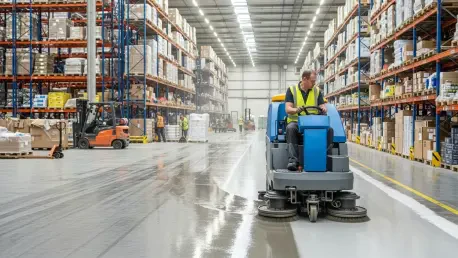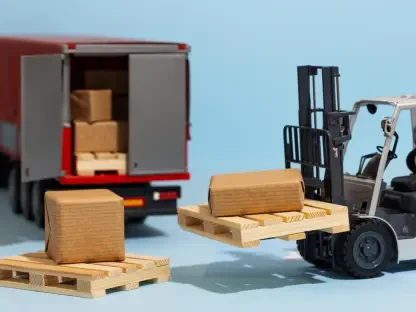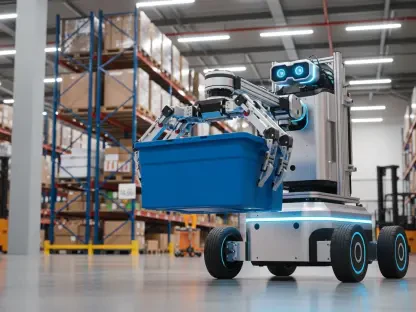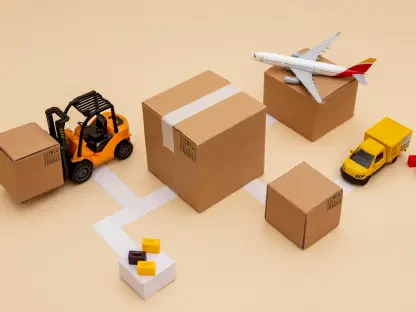Short introduction Meet Rohit Laila, a seasoned veteran in the logistics industry with decades of experience spanning supply chain management and delivery operations. With a deep passion for technology and innovation, Rohit has witnessed firsthand the transformative impact of streamlined processes on business productivity. Today, we dive into his insights on the critical role of efficient cleaning equipment servicing, the challenges of managing diverse fleets, and how a unified approach can revolutionize operations across industries.
How does operational efficiency shape the success of modern businesses, especially in high-demand sectors like logistics?
Operational efficiency is the backbone of any successful business today, especially in logistics where margins are tight and downtime can cost thousands. It’s about getting the most out of every resource—time, equipment, and people. In fast-moving environments, whether it’s a warehouse or a delivery hub, delays caused by equipment failure or poor maintenance can ripple through the entire supply chain. Efficiency ensures you meet customer expectations, keep costs down, and stay competitive in a world where speed is everything.
What role do clean and safe environments play in maintaining productivity across different industries?
Clean and safe environments are non-negotiable, no matter the industry. In logistics, a spotless warehouse floor prevents accidents and ensures smooth movement of goods. In retail, cleanliness directly impacts customer perception. In healthcare, it’s literally a matter of life and death with hygiene standards. Professional cleaning equipment keeps these spaces up to par, but if that equipment isn’t maintained, you risk safety hazards, compliance issues, and operational hiccups that can grind things to a halt.
What challenges do businesses often encounter when managing a fleet of cleaning equipment from various brands?
The biggest challenge with a mixed fleet is the complexity it introduces. You’ve got different machines from different manufacturers, each with unique parts, manuals, and maintenance needs. This setup often means dealing with multiple service providers, which creates a logistical nightmare. It’s tough to track who’s responsible for what, and inconsistencies in service quality can leave some equipment underperforming or out of commission longer than necessary.
Why do so many businesses end up with a mixed fleet of cleaning machines in the first place?
It often comes down to practicality and short-term decision-making. Over time, businesses acquire machines based on immediate needs, budget constraints, or what’s available in the market. A new facility might need a specific scrubber that one brand offers, or a deal pops up on a different brand’s pressure washer. Before you know it, you’ve got a patchwork of equipment. While this works initially, it creates a fragmented system that’s harder to manage as the fleet grows.
What are the major drawbacks of relying on multiple service providers for equipment maintenance?
Using multiple service providers is a recipe for inefficiency. You’re juggling different contracts, response times, and pricing models, which balloons administrative work and costs. On top of that, service quality varies—some providers might prioritize their own brands, leaving other machines waiting for parts or repairs. This inconsistency increases downtime, shortens equipment lifespan, and ultimately disrupts your operations when you least expect it.
How can a unified service approach transform the way businesses handle equipment maintenance?
A unified service approach is a game-changer because it streamlines everything. Having a single provider who can handle all brands means one point of contact, consistent service standards, and faster resolutions. It cuts down on paperwork, reduces costs by eliminating redundant contracts, and ensures your entire fleet is maintained to the same high standard. This kind of simplicity lets businesses focus on their core operations instead of micromanaging repairs.
What makes a service model that supports all brands of cleaning equipment stand out in today’s market?
A multi-brand service model stands out because it addresses a real pain point—diversity in equipment. Unlike traditional servicing that’s limited to one manufacturer, this approach offers expertise across various makes and models, from vacuums to sweepers. It’s backed by a network of trained engineers and stocked vans for quick fixes, which means less downtime. For businesses, it’s a one-stop shop that delivers peace of mind, knowing every machine is covered under one reliable system.
How does a high same-day repair success rate impact businesses that depend on cleaning equipment daily?
A high same-day repair rate—say, over 90%—is a lifeline for businesses. When a machine goes down, every hour it’s out of service costs money and disrupts workflows. Getting it back up and running the same day minimizes that hit. It keeps operations smooth, prevents backlogs, and ensures you’re not scrambling to find workarounds. For industries like logistics or retail, where cleanliness and uptime are tied to revenue, this speed is invaluable.
What kind of tools or strategies help minimize disruption during equipment servicing?
Digital tools and proactive strategies make a huge difference. Digital service reporting, for instance, gives real-time updates on maintenance status, so managers always know what’s happening. Scheduled preventative maintenance is another key—it catches issues before they become breakdowns, reducing unexpected downtime. These systems, combined with transparent communication, ensure servicing fits into a business’s rhythm without throwing operations off track.
Why is simplifying equipment servicing not just a convenience but a critical need for businesses today?
Simplifying servicing goes beyond convenience; it’s a strategic necessity. In today’s competitive landscape, every minute of downtime or inefficiency chips away at your bottom line. A streamlined service model ensures equipment reliability, cuts costs, and frees up resources to focus on growth rather than firefighting maintenance issues. It’s about building resilience into your operations, which is critical when customer demands and market pressures keep ramping up.
Can you share a story of how a unified servicing approach made a tangible difference for a business?
Absolutely. I recall a mid-sized logistics company I worked with that struggled with a mixed fleet of cleaning machines across multiple warehouses. They had constant delays waiting for repairs from different providers, and downtime was costing them dearly. Once they switched to a unified service provider capable of handling all brands, their repair turnaround dropped significantly. Equipment uptime improved, administrative headaches vanished, and they saved a chunk on service costs. It was a clear win that let them focus on scaling their operations.
What’s your forecast for the future of equipment servicing in industries like logistics and beyond?
I see equipment servicing becoming even more integrated and tech-driven in the coming years. With IoT and predictive maintenance technologies, machines will signal issues before they happen, and service providers will respond proactively. I also expect unified, all-brand servicing to become the norm as businesses prioritize efficiency over fragmented solutions. In logistics especially, where every second counts, these advancements will be critical to staying ahead in a hyper-competitive market.









